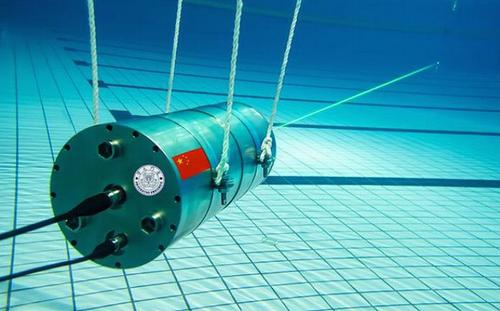
XIAMEN, Fujian, China, July 10, 2023 (ENS) – Technology for the remote sensing of underwater oil, useful for monitoring leaks in submerged oil pipelines, ships, drilling platforms and other infrastructure, has just taken a leap forward.
Researchers at Xiamen University in southeastern China have demonstrated their new single-photon Raman lidar system by using it to detect varying thicknesses of gasoline in a quartz cell that was 12 meters (39.3 feet) away from the system.
Both the lidar system and the quartz cell were submerged in a large pool at a depth of 0.6 of a meter (23.6 inches) underwater.

The lidar system was able to detect and distinguish all thicknesses of gasoline, ranging from 1 mm to 15 mm.
“Differentiating substances in water and detecting their distribution characteristics in the ocean are of great significance for marine monitoring and scientific research,” research team leader Mingjia Shangguan said.
Shangguan, from the State Key Laboratory of Marine Environmental Science at Xiamen University’s College of Ocean and Earth Sciences, led a lidar team at the Optical Oceanography Laboratory in developing a new Raman underwater lidar system for stand-off detection of oil in water.
Traditional lidar systems designed to operate above water on ships, aircraft or satellites can achieve large-scale ocean profiling, but their detection depth is limited, especially during rough sea conditions.
But Raman lidar systems can be used for analysis underwater at different depths without being affected by sea conditions.
How It Works
Raman lidar works by emitting a pulse of green laser light into the water that interacts with substances such as oil. This excites inelastic Raman signals that can be used to identify substances.
By measuring the intensity of Raman signals at specific wavelengths, lidar can provide information about the oil content in the water.
But to date, their use has been limited because the Raman lidar systems in use today are heavy, bulky power hogs.

“Traditional Raman lidar systems rely on increasing laser power and telescope aperture to achieve remote sensing detection, which leads to a large system size and high-power consumption that make it difficult to integrate lidar systems onto underwater vehicles,” said Shangguan.
The new Xiamen University single-photon Raman lidar system uses just 1 microjoule, μJ, of pulse energy and 22.4 mm of receiver aperture.
To boost sensitivity, Shangguan and his team incorporated single-photon detection into their compact underwater Raman lidar system.
“The use of single-photon detection technology made this work possible by improving detection sensitivity to the level of single photons,” Shangguan explained.
The entire new lidar system is just 40 cm (15.7 inches) long with a diameter of 20 cm (7.8 inches) and can be operated up to 1 km (.6 mile) underwater.
“Mounting an underwater Raman lidar system on an autonomous underwater vehicle or remotely operated vehicle could enable monitoring for leaks in underwater oil pipelines,” said Shangguan.
“It could potentially also be used to explore oceanic resources or be applied in detecting seafloor sediment types, such as coral reefs,” he said.
The researchers are now working to increase the number of detection channels and the Raman spectral resolution of the single-photon lidar system to enhance its ability to distinguish different substances in water. This would allow it to be used to analyze underwater bubble types and to detect corals and nodules of manganese, used for steel production.
In the Optica Publishing Group journal “Applied Optics,” the researchers describe their new lidar system in an article titled, “Remote sensing oil in water with an all-fiber underwater single-photon Raman lidar,” Applied Optics vol. 62 issue 19 pp. 5301-5305 (2023). DOI: doi.org/10.1364/AO.488872
Featured image: Most shipboard fires begin with an undetected oil leak. In this January 2018 photo provided by China’s Ministry of Transport, firefighting boats work to extinguish a blaze on the Iranian oil tanker Sanchi in the East China Sea. The ship later sank. The new single-photon Raman lidar system could detect any oil leaking from the stricken ship.


